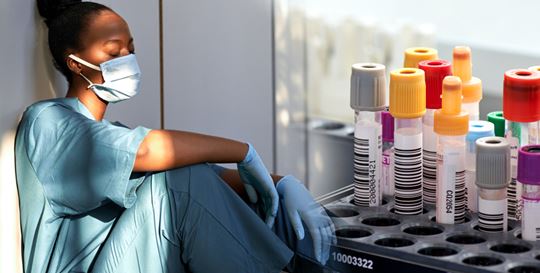This is part two of “The Advantages of Automation in Saving Time and Space in The Laboratory,” a two-part series that explores how laboratories can add value to patient care and organizational operations by saving time and space through automation.
In today’s healthcare environment, laboratories are responsible for adding value in a way that positively impacts patient outcomes and supports organizational goals through cost-effective care.1 Central to this is ensuring laboratory efficiency. One of most significant contributors to efficiency over the last several decades has been the development of lab automation. Because automated systems combine multiple functions into a single unit, they also enable laboratories to increase test volumes without added staffing or space requirements. In fact, in some cases, space requirements can be reduced and staffing time freed for higher value work.
This article focuses on space savings in the laboratory through automation. Part one of the series addresses time-savings in the laboratory through post-analytical capabilities.
How laboratory layout impacts productivity
The layout of a laboratory has a direct effect on productivity and is foundational to ensuring a seamless, productive workflow. There must be enough space, so work remains unhindered and employee safety is upheld.2 Advances in automation have enabled technologists to move away from compartmentalized manual benches, which has given laboratories more opportunities to customize their spaces and design their workflows. Added to this is the availability of a range of systems—from total laboratory automation to pre- and post-analytical modules. This offers laboratories greater control over their workspaces and designs, and allows them to scale products according to test volumes, laboratory size and cost requirements.3 Further, it allows laboratories the flexibility to adapt to and grow with changing needs and opportunities related to technology, patient care and organizational goals.
One area in which automation has significantly improved processes is during pre-analytical activities. These steps include order entry, centrifugation, barcode verification, sample check and more. This phase of testing is the most laborious and involves a number of steps.4 Additionally, up to 75% of laboratory errors occur during pre-analytical activities.4 Automating pre-analytical tasks has the potential to make laboratory operations more efficient and safer;5 however, laboratories must balance the benefits of automation with cost and space constraints.
Standalone pre-analytical automated systems or benchtop units historically have offered smaller footprints than what is available with total laboratory automation. Thus, they have been cited as a good choice for laboratories with limited floor space.6
Flexibility in laboratory automation
The DxA 5000 total laboratory automation solution from Beckman Coulter, however, offers a modular configuration to provide the flexibility needed in today’s dynamic healthcare environment. The DxA 5000 offers scalable pre-analytical automated components that have a significantly smaller footprint than other available systems. Designs feature input modules with distribution and a decapper alone, along with options for single- or dual-centrifuge capabilities. The space savings gained from these DxA 5000’s automated pre-analytical solutions ranges from 54% to 68% over similar automated systems.* This can amount to a space savings of more than 14 m2, depending upon the configuration. When combining pre- and post-analytical capabilities, the DxA 5000 offers the same functionality and comparable throughput of traditional units while requiring up to 69% less space.
Learn how the DxA 5000 total laboratory automation solution is helping drive efficiency in the clinical laboratory.

 English
English





